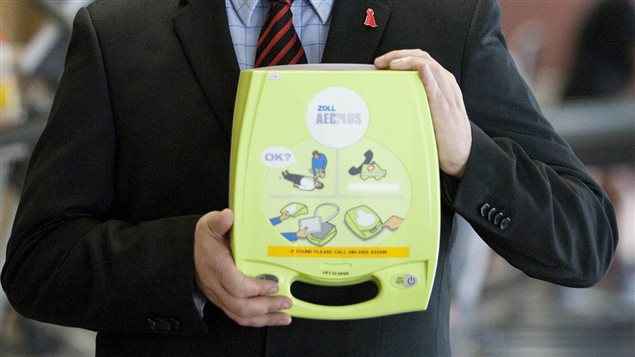Professional hockey play Rich Peverley’s heart stopped during a game in March 2014. Doctors on site used a defibrillator to shock his heart into starting again and it saved his life.

Now, Peverley is working to get automatic external defibrillators or AEDs into schools in and around his hometown of Guelph and to train students to use them. He has partnered with the Heart and Stroke Foundation which already has a program to get AEDs into high-traffic places such as swimming pools, parks, libraries and schools.
‘It can happen to anyone’
“A lot of locations are important,” says Andrew Lotto of the Heart and Stroke Foundation of Canada. “Cardiac arrest is not really discriminatory…It can happen to anyone, anywhere, at any age and basically, of any physical level, pretty much any time.”
ListenThere is a common belief that older people are mostly at risk, but children too can suffer cardiac arrest because they may have been born with congenital heart disease, have arrhythmia or heart murmurs. So, it makes sense to have defibrillators in schools both for students and staff. They may also rescue visitors who come to watch sports events or attend community events that are sometimes held in schools.
Most will not survive cardiac arrest
Although the figures vary from year to year, it’s estimated that about 40,000 people suffer a cardiac arrest each year in Canada and most will not survive. “That’s way too many,” says Lotto. “85 per cent of cardiac arrests happen outside of hospital and the survival rate drops by seven to 10 per cent a minute when somebody does receive immediate CPR or defibrillation.
“So, critically we want to get AEDs on people as early as possible which means they need to be where people are.”







For reasons beyond our control, and for an undetermined period of time, our comment section is now closed. However, our social networks remain open to your contributions.